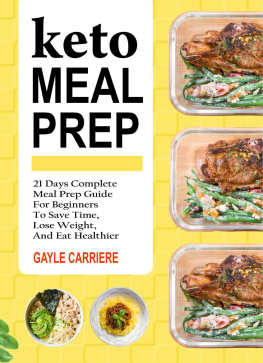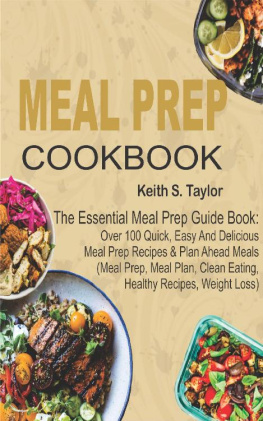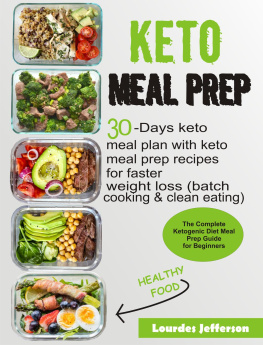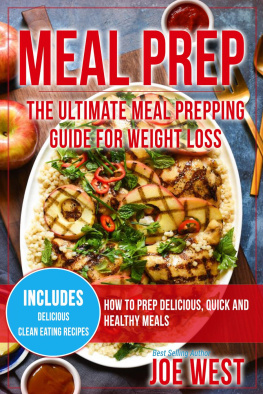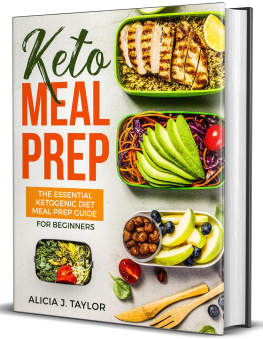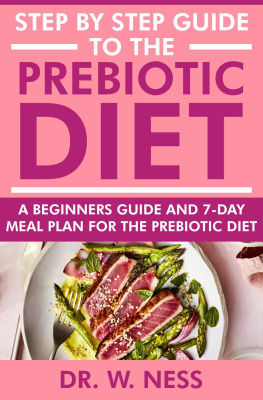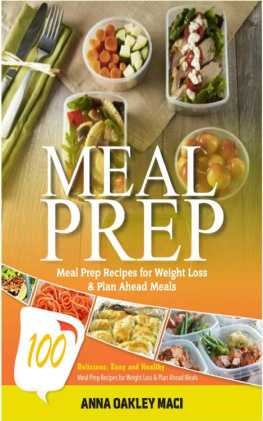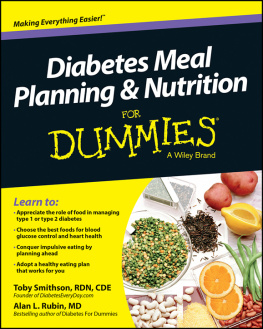INTRODUCTION
After years of running to the supermarket and fast food at will, meal planning is becoming a trend to return to healthy eating and a more balanced lifestyle.

Meal planning could be a valid help for losing weight over the long term. Lots of diet plans are easily accessible. Some have passed the time test, and sometimes the program itself can decide whether you lose weight. Regardless of what it says, you won't lose weight if it is wrongly put together. Run the other way around when you see a diet plan that offers a quick and easy weight loss. Loss of weight is hard work; discipline and commitment are essential, but meal planning is the practical tool that you need to follow a diet effectively. With successful planning skills that help you to lose weight, or keep it back, everything will be easier.
Below you find some of the big advantages of meal planning:
It makes you eat healthily. When you plan meals, you choose foods from each of the food groups required to prepare each meal. If you eat healthily, the body will be better and more efficient in burning fat. You burn more calories as your metabolism increases. The majority of diet plans recommend eating many small meals all day long. It helps the metabolism of your body, working more smoothly and effectively. Five meals, consisting of about 300 calories, give most people the needed calories to stay healthy and feel full.
Grant you flexibility . You can change the food you eat remaining within your diet plan. You can't have pizza every meal, but you can make your menu much easier to stick to by slightly include some of your favorite foods.
Portion control support . Sometimes we know how many calories we want to eat for the day, but we're trying hard to get the nutrient mix right. How many fats, carbohydrate, or fiber calories do we need? A good meal planning will do everything for you. It's not enough to know how many calories must be eaten in a day. Meal planning tells you what to eat, how much to eat, and when to eat.
You save time and money . You won't have to think about what to buy when you do your shopping. You will know in advance what to buy, and this will save you time and money because you will not make impulsive purchases.
But beware, it is also true that the rigid organization does not work for everyone. Much depends on your personality. If you are not the kind of person who likes to keep everything under control and if you sometimes feel the need to give yourself something unplanned, do so as well.
Meal planning is not a science, at the moment, it is just a set of good practices that can help you to live more serenely the preparation and consumption of your meals. You will probably need to adapt these practices to your needs until you find a method that works perfectly for you.
CHAPTER ONE
A SUSTAINABLE CHOICE

Believe it or not, it is possible to keep a low budget on food and still eat healthily. Thinking about it, meal planning, 2-3 generations ago, was the absolute normality. Our grandmothers had to be very careful about how to ration the meals during the week for the family. There was certainly not the abundance that we have nowadays, but as often happens, the old ways of doing things are still effective today for a healthier lifestyle, less consumerist, and in harmony with what surrounds us. The whole world is becoming a dump because of excessive consumerism, and I firmly believe that with meal planning, each of us can do its part in helping the planet.
For the busy families of today, it is often easier to click through the local driving shop, than finding time and energy for a new meal every night. Not only is fast food an expensive choice for your family, but it is also not the healthiest way to eat every day.
Keep ingredients on hand for quick and easy meals.
A quick tip is to cook some of your food beforehand later in the week for quick storage in the freezer. You can easily double and triple your recipes from time to time during the week to make an inventory of frozen goods. You simply must heat a meal and make your side dish or salad for one of those too often busy nights without cooking time. You can also save money by purchasing bulk goods and taking advantage of market sales by preparing in the future.
Serve breakfast from time to time for dinner. Even if served in large quantities, breakfast is one of the simplest cooking dishes. Families in many busy homes rarely have time to have a great breakfast of cookies, ovens, and bacon in the morning, and sometimes dinner like this is exceptional.
While it would not be enjoyable to cook for a whole month, you can plan meals more conveniently in advance during the month and save money.
Firstly, set a budget for food and then make the menus and meal lists for your budget, not the other way around. You'd be surprised if you knew how creative you just could do "this and no more" on the store.
Take a few minutes to create a weekly menu and write down what you need in your home for every meal. Go through the freezer and the armchairs to see what's there. Make a note of the scheduled events. For example, birthday dinners, parties with friends, or any event that will impact your meal plan for this week.
Then look at the posters of your local food shops. Plan your food around what is on sale.
If you want to be serious about it, write the individual weekly lists one month ahead of time (write the entire month of shopping lists in one day, and you will be forced to go to the store on time to shop) if you expect to shop regularly.
Write down the intention on a blank calendar page and put it in an easily visible location (refrigerator, family table, etc.). It takes time to draw up menus and food lists, saving you more time every night, and creating less tension when you dine that night.
Find shopping cooperatives in your local area.
Food shopping cooperatives have small membership fees, which you can quickly recover from significant savings on many items you purchase regularly. Natural food cooperatives are an excellent and popular way to buy organic fruit and vegetables, whole grains, and other expensive food at competitive prices.
Most companies offer a program called Food Sharing. Participants can receive a $35-$ 40 food boxes at a minimum cost (usually around $14) and 2-hour community service. The community service can be as easy as supporting or volunteering an older neighbor in children's or Sunday school. The stocks even offer meatless shares and common food.
You can also begin shopping with a group of friends or neighbors for your own little informal food bag. Through buying in big, bulk containers (50 pounds) products such as food, sugar, wheat cream, oats, etc., you can divide the material into family amounts and break costs.
Many consumers in their local club shop buy large amounts of merchandise. Although many of the products in these shops are incredibly cheap, make sure you shop only what you really need. You sometimes find that the sales per pound or product in your local corner food shop are often less expensive than those in large warehouses. Ensure you get the best price per unit.
Of course, you have to buy those foods that you know you can keep without risking them to go bad. For example, stocking bananas may not be a good idea because they spoil easily-unless you want to bake them or freeze the pulp later in your recipes.


